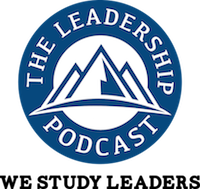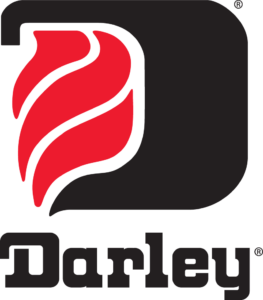
Jason Field is an Executive Coach, Outdoor Professional, Expedition Leader, and Past President and CEO of W.L. Gore & Associates. He’s a board member, an entrepreneur, and a veterinarian. His focus is to develop great leaders to be force multipliers for their teams. The discussion covers a team’s responsibility, decision-making, the principles of problem-solving, and the role of process to obtain and maintain focus on the customer. The discussion also includes insights from Jason on his role as a guide for hikes into the Grand Canyon. Jason encourages you to work hard, follow your interests, and chase experiences.
Key Takeaways
[2:43] Jason has been married for 16 years. His son just turned 14 and is starting to surpass Jason in capability in just about everything they do together.
[5:05] Adaptability and creative thinking are desirable attributes in many organizations but may be in tension with process and structure. Adaptability and creative thinking are behavioral expressions of a culture. These traits are not desirable in every case, such as when making suture needles, for example, that need a lot of process rigor to come out exactly the same way every time.
[5:56] If adaptability and creative thinking are desired outputs, you need leadership levers like the Galbraith Star Model™. You design adaptability and creative thinking into the organization. You look at strategy, structure, processes, rewards, and people to get the behaviors of adaptability and creative thinking as outputs.
[6:22] Adaptability and creative thinking go with belief systems and values. You start with the people you bring into the organization. If you bring people in who are highly rule-oriented, it’s going to be hard to pull adaptability and creative thinking out.
[7:30] The Gore company emphasized the power of small teams with the most knowledgeable associate taking responsibility for decision-making. Decision rights don’t come from being a leader. A leader in a small team has the responsibility of facilitating a decision-making process and pointing to the most knowledgeable associates. This all requires the team to have organizational strategic clarity.
[8:22] You complement small teams with process. If the idea is to be adaptable and draw upon the creative thinkers on the team, you need processes that will move relevant information to the teams in a timely manner so they can act according to the best information.
[8:39] Processes should do two things: enable and expedite decision-making and mitigate risks. In the case of teams, it’s mainly about expediting decision-making.
[8:51] Rewards make sure you are celebrating business wins when you see teams operating in that adaptable mindset and drawing upon their creativity.
[9:20] The Pairin Survey identifies people with high objective and analytical scores versus people with high intuitive and conceptual scores. Most teams are strong in objective and analytical scores for solving problems. Intuitive and conceptual scores relate to being good at understanding the root causes and seeing trends and patterns.
[10:14] Having the right leader at the right time means being able to draw upon both individuals with strong analytical skills and individuals with strong intuitive skills, that can draw out insights from others, depending on the problem or opportunity that’s being presented.
[10:58] Jim points out how Jason had clarified an assumption in the first topic of adaptability and creative thinking: Are they desirable in every scenario? Then Jason talked about when they are not helpful and when you need them. How do we encourage people to ask the right questions and clarify their assumptions?
[11:53] Jason tells how active listening works for him. He suggests that it’s a powerful thing for leaders to step back and ask themselves what an individual is trying to get across to them and ask the right questions and get the right assumptions on the table as they engage in problem-solving.
[13:07] When Jason has an employee engagement, he is trying to inspire them while deriving information for himself. It’s a two-way street. For engaging people, first, demonstrate an interest in what that individual or team is doing. Draw people to the higher purpose of the strategy of the organization. Demonstrate that you care about them.
[14:20] Jason and Jim role-play a conversation. Jim is an engineer working on a product development team and Jason is an executive who pops into the office and asks what Jim’s working on. As they talk, Jason shows interest, asks follow-up questions, points to organizational strategy and tying to the customer, uses active listening, adds personal encouragement, and offers help for resources.
[17:28] Deconstructing the role-play, the leader makes sure the person knows the leader is listening by repeating and validating what the person says, taps into the personal impact of how the person feels, and how the leader can help. These things are attributes of an energizing discussion. The leader asks how the person knows they are being successful, looking at their place in the organization.
[19:20] The best way to inculcate the core values into the organization is to demonstrate them. You’ve got to walk the talk. Jason says that it’s a competitive advantage to being a purpose-driven organization that’s incorporated its values into the fabric of its operation. Jason leans pretty hard on that type of work. This assumes you’ve done the hard work to identify values that are true to the organization.
[20:37] When you have your organizational values, incorporate them into your mission, vision, and strategy. Those are the pillars upon which your organization’s direction is built. Then draw on those components and demonstrate the values in your products, services, and decision-making frameworks in the organization. At the end of the day, those values characterize your brand.
[21:59] Integrity is one value Jason sees a lot. Integrity may be subject to interpretation. Integrity has a dependence upon the values that sit behind it. Make sure you know how your key stakeholders are interpreting integrity. Military veterans often say integrity is choosing the hard right vs. the easy wrong.
[23:55] When the board and leadership align with the core values and demonstrate them, that brings alignment around the value of integrity. Brand strategist Tom Storey told Jason that value is “A promise made and kept by the entire organization and experienced by our customers.”
[24:39] Keep those values front and center in your decisions so you create experiences that reinforce them. Celebrate the individuals, teams, and products that demonstrate the values you hold dear. That’s how you start to embed those values into organizations.
[26:25] Jason shared his thoughts about personal responsibility. Can it be taught? There is a “nurture” component in surrounding people with others that demonstrate accountability and commitment to an outcome. The peer environment might be the strongest driver of personal accountability. The Special Forces environment creates a very high expectation of dependency on one another.
[27:30] Leaders can draw out that discretionary effort in a way that’s rewarding to the individual. Use a rewards system that addresses various levels in Maslow’s hierarchy of needs. The financial component can elevate people to a limited degree to rise to challenges. The personal recognition of catching people doing things right is energizing. Help people understand their place on the team and in the organization.
[28:43] Be purpose-oriented. Show how products and services contribute to a greater good and make a difference in the world. Jason’s favorite rewards system is giving people the freedom to operate individually, drawing on their strengths to make a difference in the organization.
[30:23] There are individual incentives and team incentives that can be used to encourage performance. Jason leans toward understanding what you are trying to create and whether you are relying heavily on team-based outcomes or you need individuals to get into the lab and grind away toward solutions and outcomes. Jason’s bias is to revert to the power of teams. But Bob Gore invented Gore-Tex individually.
[31:07] You can’t look past individual accomplishments and assume the team will come together and deliver a better outcome because it’s a team. There are different environments and different problems that call for different solutions. To the extent you can see that, as a leader, is how you should build your incentive structure
[32:08] What derails leaders? Jason says it’s losing sight of the market and getting disconnected from sales. It’s easy to become internally focused and pull internal levers to optimize an organization, moving away from the market and the customer. You might drive value creation in the near term but miss market signals for long-term opportunities. Optimize for the near term and Invest for the long term.
[34:08] One of the most important lessons Jason learned, mid-career, as he was transitioning into product leadership was clarity of purpose and the role process plays. Jason was working in medical devices and the stakes are high in that product category and a lot of risk. The division leader went to all meetings when there was a product issue that could have a patient impact.
[35:45] The division leader always brought clarity by asking what is the process telling us, and is the process benefitting us? If the process isn’t giving us clarity as to what the answer might be, we probably don’t have a good process in place. Jason’s takeaway was the role process plays in helping to understand the root cause of what’s going on. If the process isn’t giving the answer, make some changes.
[36:28] The final answer never comes from the product. What is all the data telling you, and how does that translate into the impact on the customer? In medical devices, of course, patients are the most important. Keep what is most important to your organization front and center in decisions when things don’t go as planned.
[37:30] Jason has been an outdoor enthusiast his entire life. In the past year, he started guiding in the Grand Canyon. It has been absolutely fascinating. When you’re a guide in that setting, people are out of their element and hold guides in high regard. Jason hosts a picnic lunch and insists on doing all the cleaning. It sends the message that he’s there to serve and a reminder of the power of service.
[39:09] People hiking into the Grand Canyon have varying levels of physical fitness. The two things to be most concerned about on the hike are dehydration and heat exhaustion. You need people to be on point and listening, from the very start of the trailhead. It is very hard to keep people focused and get to where you want them to go. Pace matters. There are no easy hikes into the canyon and out.
[40:18] You have to get the right feedback mechanisms in place. Verbal communication can be one of the worst ways to get feedback on a hike. You have to set up mechanisms to get guest feedback. Are they stumbling? How much water are they drinking? Jason counts water bottles. Organization leaders also have to be aware that much is non-verbal. Set up feedback mechanisms. Pay attention.
[43:16] Jason offers three core elements that come together to create a high likelihood of success: Work hard, follow your interests, and chase experiences. If Jason hadn’t chased the experience of a crucible with Jan, he probably wouldn’t be doing outdoor leadership experiences and executive coaching now. He thanks Jan for that. It was walking the talk.
[44:40] Closing quote: Remember, “There is something in every one of you that waits and listens for the sound of the genuine in yourself. It is the only true guide you will ever have. And if you cannot hear it, you will all of your life spend your days on the ends of strings that somebody else pulls.” — Howard Thurman
The Leadership Podcast is sponsored by W.S. Darley & Company.
Founded in 1908, Darley remains a family owned and operated business, providing the highest quality equipment solutions to our country’s warfighters and firefighters.
Learn more at darley.com and darleydefense.com


Recent Comments